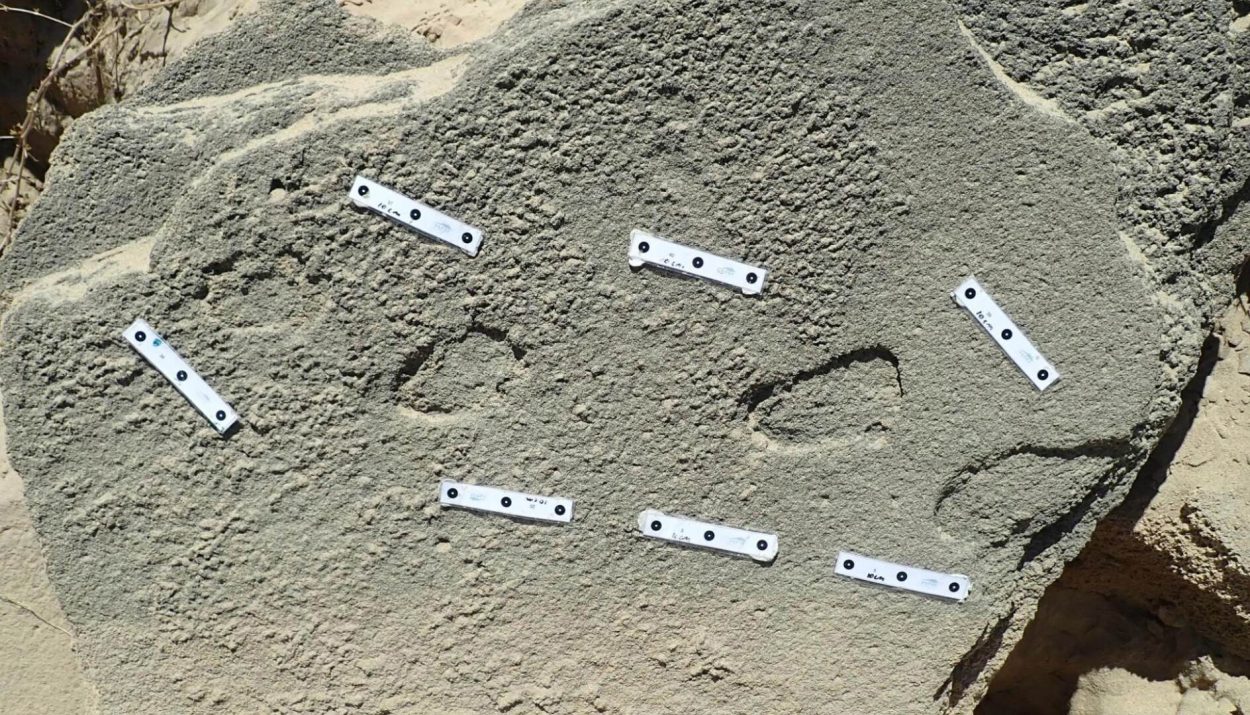From flip-flops and gladiators to slides and huarache, sandals have been a go-to summertime footwear for centuries. A recent analysis of ancient human footprints found in South Africa, however, may just prove that our love of sandals is much older than we think.
The ancient footprints, which are between 79,000 and 148,000 years old, depict rounded fronts with no visible signs of toes … an indicator that the Stone Age humans who made the prints may have been wearing hard-soled sandals.
The History of Sandals, As We Know It
Sandals are a footwear that is commonly associated with the Ancient Egyptians, but in reality, this strappy shoe was only worn by the Egyptian elites. They are also – and perhaps, more so – linked to the Ancient Greeks and Romans. Today’s ankle-high gladiator sandals are, after all, modeled after the ones worn by Spartacus and his brethren.

It may surprise you, then, to learn that the oldest known example of a sandal does not come from Greece, Italy, or even Egypt. It comes from Oregon. This shoe was crafted about 10,900 years ago and made from sagebrush bark by Native American in the Pacific Northwest.
The Provocative Sandal
The use of sandal-like footwear was widespread across the globe. There are examples of this style of foot covering being used in South America, Mesoamerica, China, Japan, Africa, and Polynesia, in addition to Europe and North America.

The use of sandals in the Christian world, however, greatly declined as Christianity rose. The reason for this is that church leaders viewed sandals as a provocative type of footwear that left women’s feet virtually naked. It could be that the sight of toe cleavage was too much of a distraction for men or that it was the sign of a wanton woman.
Sandals Just Make Sense
The introduction of sandals was most likely born out of necessity. And if you think about it, sandals just make sense. Without some type of protective footwear, early humans were at risk of cuts, scrapes, and bruises from rocks, pebbles, thorns, and tree roots.
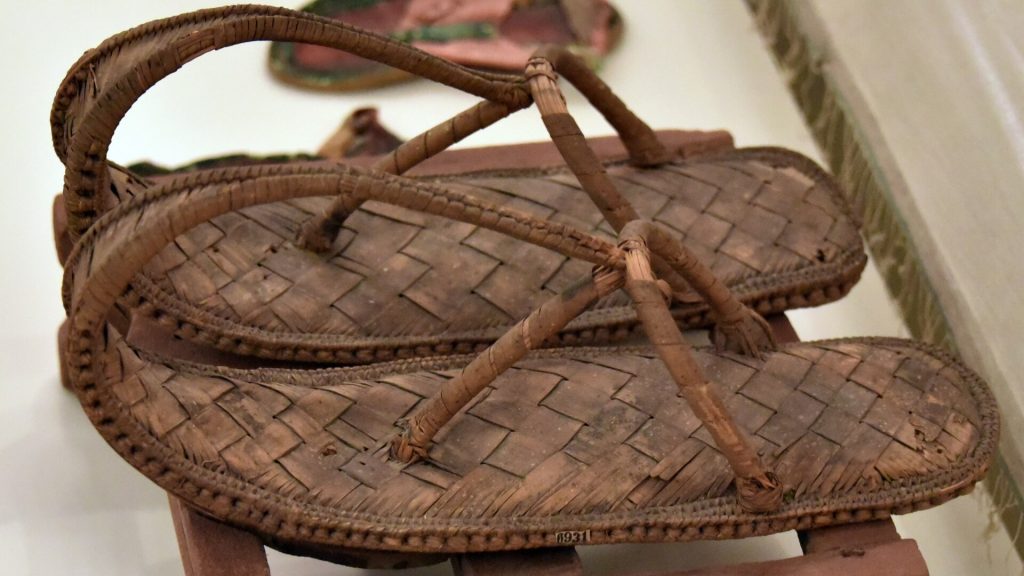
Early sandals had a bottom made from wood, bark, animal hide, or woven grasses. This bottom portion was latched to the sole of the wearer’s feet using rope, braided leaves, or leather. They may not have been super stylish or ergonomically designed, but they got the job done.
The Footprints of Our Early Ancestors
Millions of years ago, our early human ancestors went out for strolls. They walked across various types of natural materials, such as clay, sand, mud, and volcanic ash. Afterwards these materials hardened and were covered with layers of sediment, preserving the footprints for later discovery.
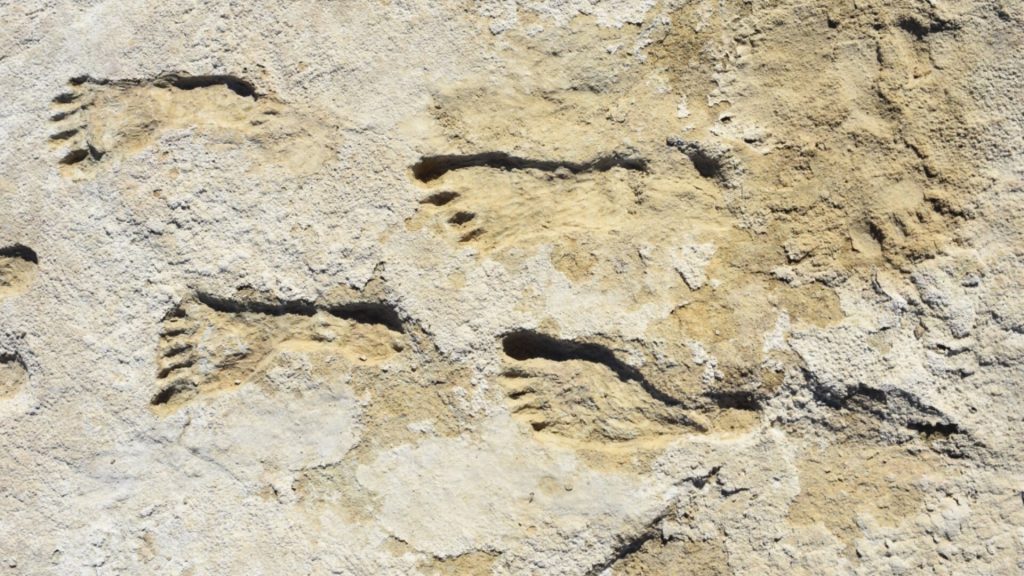
Archaeologists have found early human footprints in various places around the globe, giving them a unique opportunity to learn more about human development. For example, footprints discovered in Laetoli, Tanzania, are believed to be more than 3.6 million years old. Similar tracks in White Sands, New Mexico, offer clues to the migration patterns and social structures of early humans.
Unearthing Ancient Footprints
The ancient footprints were discovered at the Kleinkrantz site, as well as the neighboring Goukamma and Woody Cape sites, by members of the Cape South Coast Ichnology Group.

This organization was founded in 2007. Since then, its members have searched the coastline of South Africa for ancient tracks left behind by animals or hominins.
Examining Footprints in South Africa’s Kleinkrantz Site
In three locations along the Cape coast of South Africa, ancient hominin footprints have been found in sandstone. Recently, ichnologist Charles Helm of South Africa’s Nelson Mandela University, led a research study to examine the tracks.
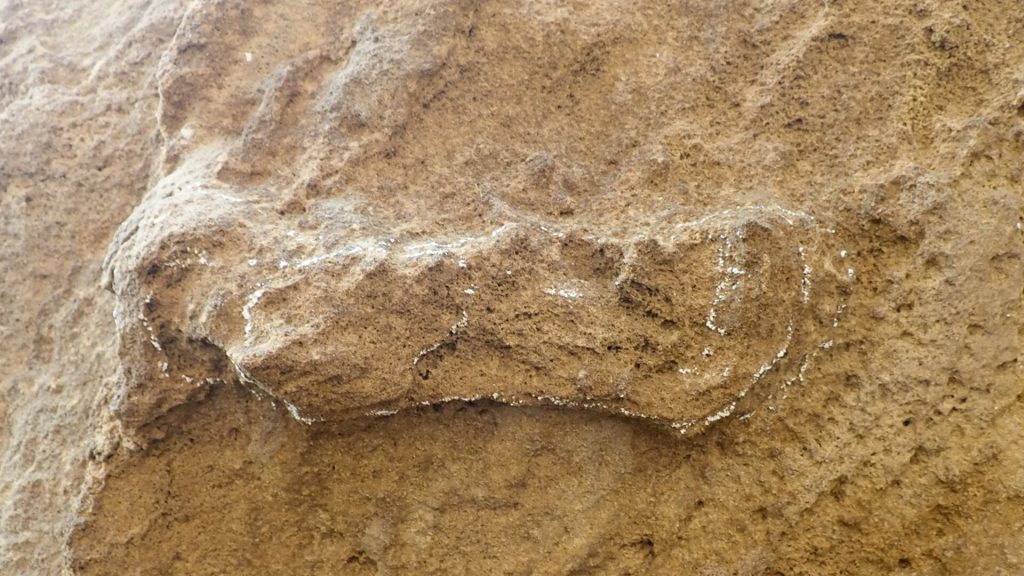
Ichnology is a specialized branch of paleontology and archaeology that focuses on the study of fossilized footprints, tracks, trails, and borrows to learn about the animals or organisms that created them. What Dr. Helm and his team gleaned from the tracks at the Kleinkrantz site is groundbreaking.
Small Footprints from Man’s Distant Ancestor
The footprints found at the Kleinkrantz site are diminutive in size. They were probably left behind by a small hominin or an adolescent one. Nearby, the fossilized tracks of elephants and bovines have been located and dated to between 70,000 and 130,000 years ago.

Like the hominin footprints, the animal tracks were left behind in sandy soil that hardened to form aeolianite sandstone rock. This suggests that the early human footprints were made during the same time period.
An Odd Characteristic in These Footprints
The first thingHelm and his researchers noticed about the fossilized footprints is that they could not see toe marks. Instead, the front portions of the foot were, as he noted, “rounded anterior ends, crisp margins, and possible evidence of strap attachment points.”

Their observations pointed to one conclusion – the person who made these footprints was wearing some sort of hard-soled sandal. This would mean that early humans from Africa, not Western Europe, were the first to use protective footwear.
How Old Are These Prints?
Stone cannot be carbon dated like organic matter, therefore Helm and his team are careful not to jump to unfounded conclusions as to the date of these footprints, but based on the age of nearby sediments, it is thought that they may have been made in the Middle Stone Age.
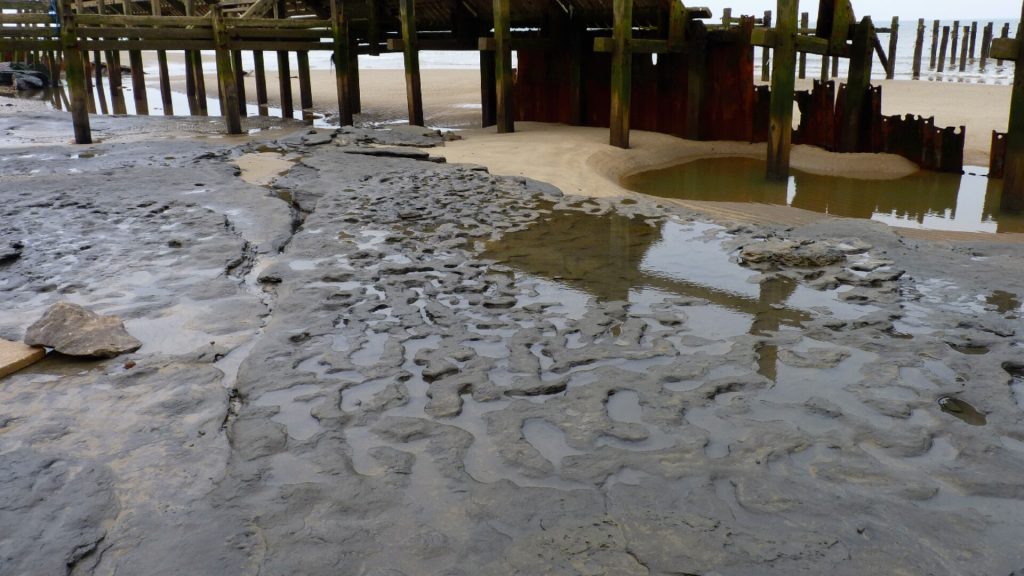
Although the Middle Stone Age extended from 280,000 years ago to about 25,000 years ago, it is more likely that the footprints were made between 79,000 and 148,000 years ago. This predates the sandals found in Oregon by tens of thousands of years.
Other Shoe-Wearer Footprints Have Been Found … But Not Many
As Helm explained, very few track sites have been found showing ancient humans wearing foot coverings. A few fossilized footprints from the Middle Stone Ages have been discovered in which shoes or sandals were worn.

They were uncovered in France and Greece. This means Helm and his team have very little examples to compare against the prints found in South Africa. He is hoping that additional discoveries will offer more evidence of ancient sandals.
Testing Their Conclusion
With so few real-world examples to hold up against the prints found at Kleinkrantz, Helm and his researchers tested their conclusion by making their own sandals. They modeled their footwear after the style worn by the San people, an indigenous culture of Southern Africa,
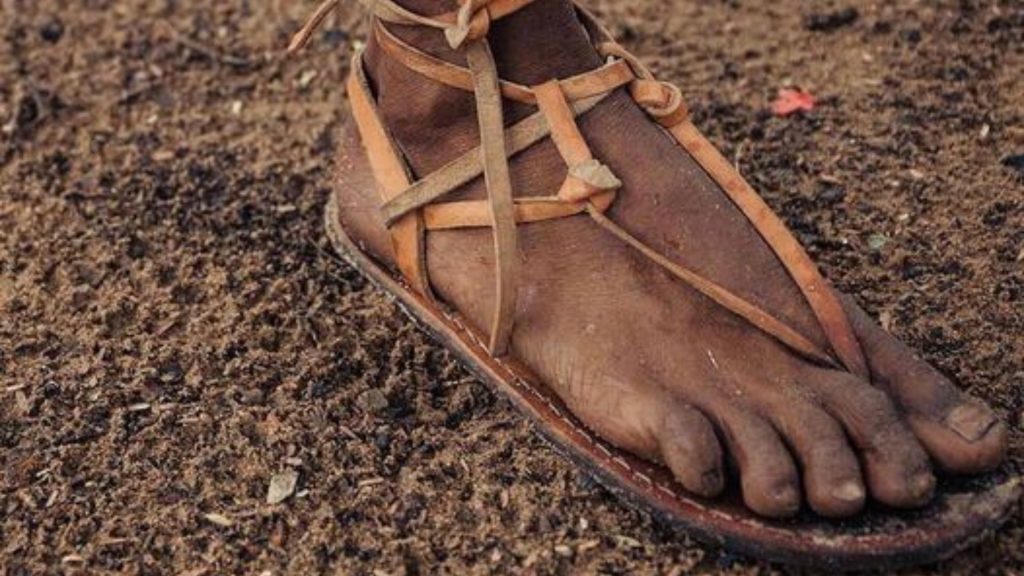
They also looked at older San footwear for inspiration. San shoes and sandals on display at area museums were examined. Based on this information, they crafted their own sandals.
Walking on Wet Sand
The researchers made two pairs of sandals for their experiment. Then they donned the hard-soled footwear and walked across wet sand. The prints left behind were compared to the ancient, fossilized footprints.

The prints they were able to replicate closely matched those discovered in Kleinkrantz. Helm said, “While we do not consider the evidence conclusive, we interpret the three sites … as suggesting the presence of shod-hominin track-makers using hard-soled sandals.”
Sandals … A Potentially Life-Saving Invention
As Helm’s report explains, “In the Middle Stone Age, a significant foot laceration might have been a death sentence.” Wearing sandals not only made the wearer more comfortable, but it may have saved his or her life.
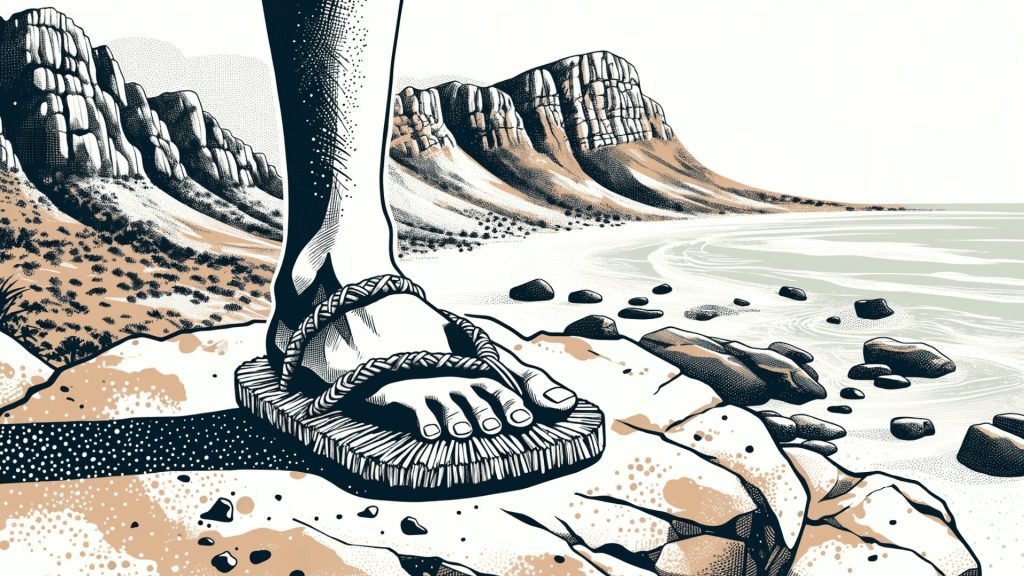
The findings are both intriguing and promising, however Helm points out that archaeologists have yet to unearth actual shoes or sandals from the Middle Stone Age. Still, the report speculates that “humans may have, indeed, worn footwear while traversing dune surfaces during the Middle Stone Age.”

